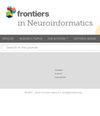自动分割急性缺血性中风后随访非对比 CT 上的出血性转变
IF 2.5
4区 医学
Q2 MATHEMATICAL & COMPUTATIONAL BIOLOGY
引用次数: 0
摘要
背景再灌注疗法后出血转化(HT)是急性缺血性中风患者的严重并发症。对出血进行分割和量化可为了解患者病情和预后提供重要信息。本研究旨在自动分割接受血管内血栓切除术(EVT)治疗的中风患者随访非对比头部 CT(NCCT)上的出血区域。我们提出了一种采用自适应阈值方法的半自动化方法,无需大量训练数据,并降低了计算要求。我们使用骰子相似系数(DSC)和林氏协和相关系数(Lin's CCC)来评估算法的性能。结果 共纳入 51 例患者,其中 28 例为 2 型出血性梗死(HI2),23 例为实质性血肿(PH)。算法的平均 DSC 值为 0.66 ± 0.17。值得注意的是,PH 病例的性能(平均 DSC 为 0.73 ± 0.14)优于 HI2 病例(平均 DSC 为 0.61 ± 0.18)。Lin的CCC为0.88(95% CI 0.79-0.93),表明该算法的结果与地面实况非常吻合。此外,该算法的处理时间也很短,每个患者病例的平均处理时间为 2.7 秒。结论 据我们所知,这是第一项对急性脑卒中患者治疗后出血进行自动分割并根据 HT 的放射学严重程度评估其性能的研究。这种快速有效的工具有望帮助预测 EVT 后伴有 HT 的中风患者的预后。本文章由计算机程序翻译,如有差异,请以英文原文为准。
Automatic segmentation of hemorrhagic transformation on follow-up non-contrast CT after acute ischemic stroke
BackgroundHemorrhagic transformation (HT) following reperfusion therapies is a serious complication for patients with acute ischemic stroke. Segmentation and quantification of hemorrhage provides critical insights into patients’ condition and aids in prognosis. This study aims to automatically segment hemorrhagic regions on follow-up non-contrast head CT (NCCT) for stroke patients treated with endovascular thrombectomy (EVT).MethodsPatient data were collected from 10 stroke centers across two countries. We propose a semi-automated approach with adaptive thresholding methods, eliminating the need for extensive training data and reducing computational demands. We used Dice Similarity Coefficient (DSC) and Lin’s Concordance Correlation Coefficient (Lin’s CCC) to evaluate the performance of the algorithm.ResultsA total of 51 patients were included, with 28 Type 2 hemorrhagic infarction (HI2) cases and 23 parenchymal hematoma (PH) cases. The algorithm achieved a mean DSC of 0.66 ± 0.17. Notably, performance was superior for PH cases (mean DSC of 0.73 ± 0.14) compared to HI2 cases (mean DSC of 0.61 ± 0.18). Lin’s CCC was 0.88 (95% CI 0.79–0.93), indicating a strong agreement between the algorithm’s results and the ground truth. In addition, the algorithm demonstrated excellent processing time, with an average of 2.7 s for each patient case.ConclusionTo our knowledge, this is the first study to perform automated segmentation of post-treatment hemorrhage for acute stroke patients and evaluate the performance based on the radiological severity of HT. This rapid and effective tool has the potential to assist with predicting prognosis in stroke patients with HT after EVT.
求助全文
通过发布文献求助,成功后即可免费获取论文全文。
去求助
来源期刊

Frontiers in Neuroinformatics
MATHEMATICAL & COMPUTATIONAL BIOLOGY-NEUROSCIENCES
CiteScore
4.80
自引率
5.70%
发文量
132
审稿时长
14 weeks
期刊介绍:
Frontiers in Neuroinformatics publishes rigorously peer-reviewed research on the development and implementation of numerical/computational models and analytical tools used to share, integrate and analyze experimental data and advance theories of the nervous system functions. Specialty Chief Editors Jan G. Bjaalie at the University of Oslo and Sean L. Hill at the École Polytechnique Fédérale de Lausanne are supported by an outstanding Editorial Board of international experts. This multidisciplinary open-access journal is at the forefront of disseminating and communicating scientific knowledge and impactful discoveries to researchers, academics and the public worldwide.
Neuroscience is being propelled into the information age as the volume of information explodes, demanding organization and synthesis. Novel synthesis approaches are opening up a new dimension for the exploration of the components of brain elements and systems and the vast number of variables that underlie their functions. Neural data is highly heterogeneous with complex inter-relations across multiple levels, driving the need for innovative organizing and synthesizing approaches from genes to cognition, and covering a range of species and disease states.
Frontiers in Neuroinformatics therefore welcomes submissions on existing neuroscience databases, development of data and knowledge bases for all levels of neuroscience, applications and technologies that can facilitate data sharing (interoperability, formats, terminologies, and ontologies), and novel tools for data acquisition, analyses, visualization, and dissemination of nervous system data. Our journal welcomes submissions on new tools (software and hardware) that support brain modeling, and the merging of neuroscience databases with brain models used for simulation and visualization.
 求助内容:
求助内容: 应助结果提醒方式:
应助结果提醒方式:


